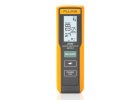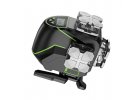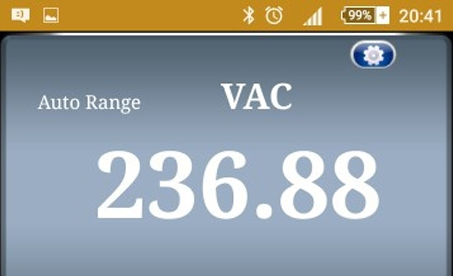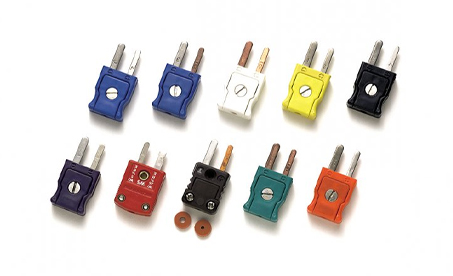Hart Scientific 1590 - Super-Thermometer II
New models of Superthermometer 1594A and 1595AViac informácií
- Accuracy to 4 ppm (0.001 °C) or 1 ppm (0.00025 °C)
- Bridge-level performance at less than half the cost
- Accepts 0.25-ohm through 100-ohm SPRTs plus thermistors
- Includes all temperature functions and stores setups




Popis produktu
New models of Superthermometer 1594A and 1595A
Hart’s Super-Thermometers are recognized in metrology laboratories around the world for their ease of use and reliable accuracy. The Model 1575A Super-Thermometer is accurate to 0.001 °C. The Model 1590 Super-Thermometer II is accurate to 0.00025 °C, or 1 ppm.
Both Super-Thermometers are perfectly suited for SPRT calibrations. These are the best lab instruments to take advantage of SPRT accuracy. They’re easy to use, they read temperature directly, they have automated data collection, they automatically calculate constants for ITS-90, and both of them are priced at less than half the price of the competitors’ resistance bridges.
Of course, there’s more.
Bridges
Resistance bridges are one of the most expensive pieces of lab equipment you can buy. Most sell for $30,000 to $50,000. The resistance bridge market is very small, and there’s hardly any competition. There’s nothing to control the price except your willingness to pay.
Resistance bridges are difficult to use. Their learning curve is long and complex, which means you’ll spend plenty of time learning to master one. Time spent learning costs you money, and costs multiply if you have to train other people!
So why buy a bridge if you have a legitimate alternative?
If 1 ppm accuracy gets the job done, the easiest and cheapest way to do it is with one of Hart’s Super-Thermometers.
1575A
The 1575A Super-Thermometer is a best-selling thermometer because of its ease of use, high accuracy, built-in software, and reasonable price. Temperature is read directly on the display in your choice of scales. There are no manual resistance-to-temperature conversions. Resistance is converted to temperature for you using the ITS-90 algorithm in any one of the instrument’s ranges. Up to 16 independent sets of probe characterizations can be stored in the 1575A’s memory. Switch SPRTs and simply call up its reference identification number. Forget the extensive, time-consuming setup required by resistance bridges. Read the features common to both units and you’ll understand why each is a great buy.
1590
The 1590 Super-Thermometer II has all of the features of the 1575A, plus it has the unbeatable accuracy of 1 ppm and a color screen that tilts to create the best viewing angles. With all of these features, it’s still less than half the price of a bridge.
In many labs with standards that require the use of bridges, Super-Thermometers have been accepted as an alternative to bridges because they are a combination of bridge technology and microprocessor-based solid-state electronics—and they’re much easier to use.
Both Hart Super-Thermometers come with an accredited calibration.
Accuracy
In addition, resolution with a 25-ohm SPRT is 0.0001 °C. Comparison calibrations or calibrations against primary standard fixed points are easily performed. Both instruments have two channels for handling two probes at once. Display and record actual temperatures or choose to read the difference between the two directly from the screen.
Both Super-Thermometers have their own on-board resistors. Each is a high-stability, low thermal coefficient, four-terminal resistor for each of the resistance ranges of the thermometer: 0.25 ohms, 2.5 ohms, 10 ohms, 25 ohms, 100 ohms, and thermistor ranges. Resistors are housed in an internal temperature-controlled oven. Can it get any better?
Well, actually it does.
DWF connectors
Hart’s patented Model 2392 DWF Connector is unique in the industry (U.S. Patent 5,964,625). Each one is machined from solid brass and then plated with gold. DWF Connectors accept banana plugs, spade connectors, or bare wires. Banana plugs are inserted in the top. Bare wires go in one of the four side holes and are held in place by a spring-loaded pressure plate. Spade connectors are inserted between the top of the connector and pressure plate and are held in place the same as bare wire. The connections are solid and difficult to dislodge. Bare wire and spade connectors require nothing more than pushing the DWF Connector in. There’s nothing to screw down or tighten.
Other features
Super-Thermometers convert resistance to temperature using your choice of ITS-90 or IPTS-68. ITS-90 requires no conversions; just enter your coefficients directly. For IPTS-68 enter R0, ALPHA, DELTA, A4, and C4. Temperature can be converted from IPTS-68 to ITS-90 automatically at your request. Calendar-Van Dusen equations are also provided in an automated mode.
Thermistor probes are characterized by coefficients of a logarithmic polynomial. Save money and use low-cost, rugged thermistor standards for ±0.001 °C accuracy in the low-temperature regions. Other thermometers don’t do all this.
Measurements can be displayed as temperatures in °C, K, or °F and as resistance in ohms or a ratio of probe resistance to reference resistance. The current source is controllable between 0.001 mA and 15 mA with a resolution of 0.2 %. Integration time and digital filtering are programmable to optimize resolution, stability, and response.
Datalogging and memory functions store measurements, and each thermometer has its own 3.5-inch disc drive for archiving data. The display is a backlit LCD for visual display of information. It has an RS-232, an IEEE-488, and a parallel printer port.
These Super-Thermometers are based on DC electronics, thus eliminating the problems with national lab certification for AC bridges and the removal of quadrature interference from AC-heated fixed-point furnaces. Read about the complete Theory of Operation of Hart Super-Thermometers at www.hartscientific.com
Multiplexers
If two channels aren’t enough, add 10 more with a Mighty-Mux featuring Hart’s handy DWF connectors. In fact, add up to 50 more channels to the 1590.
The Model 2575 provides 10 more channels for use with a 1575. For the 1590, the Model 2590 Mighty-Mux II has a cascading ability that lets you have up to 50 channels by chaining more than one Mux together, and you can now set continuous constant current levels on each channel to avoid self-heating effects. Whatever your application, a Mighty-Mux will make it easier and more efficient.
Both units have low thermal EMF relays that are hermetically sealed and magnetically shielded. You’re making true four-wire measurements with a floating guard and support for up to 20 mA of drive current.
Super-Thermometers vs. digital multimeters
Good eight-and-a-half-digit multimeters might give you accuracy to ±0.005 °C in the resistance measurement. However, DMMs require separate high-stability current sources, and you have to make EMF offsets, worry about a scheme to switch between forward and reverse current during the measurement, and devise a switch to get a second channel for an external standard resistor.
Once you’ve done all of this, you still have to convert resistance to temperature with tedious manual calculations.
Super-Thermometers do all of this automatically.
Super-Thermometers vs. everything else
There really isn’t anything else to compare to the 1590 and 1575A. No other readout is this easy to use. You’ll be doing calibrations with it the first day you receive it, not the first day after the training program is over.
|
Specifications |
1575A |
1590 |
||||
| Nominal Resistance |
Accuracy (of indicated value) |
Equivalent Temp. Value, at 0 °C |
Nominal Resistance |
Accuracy (of indicated value) |
Equivalent Temp. Value, at 0 °C |
|
| Transfer Accuracy (using external reference resistor) | 0.25W 2.5W 25W 100W 10 KW |
40 ppm 20 ppm 4 ppm 4 ppm 10 ppm |
0.01 °C 0.005 °C 0.001 °C 0.001 °C 0.00025 °C (thermistor at 25 °C) |
0.25W |
20 ppm 5 ppm 1 ppm 1 ppm 5 ppm |
0.005 °C 0.00125 °C 0.00025 °C 0.00025 °C 0.000125 °C (thermistor at 25 °C) |
| Absolute Accuracy (using internal reference resistor) |
0.25W |
100 ppm 40 ppm 8 ppm 8 ppm 20 ppm |
0.025 °C 0.01 °C 0.002 °C 0.002 °C 0.0005 °C (thermistor at 25 °C) |
0.25W 2.5W 25W 100W 10 KW |
40 ppm 20 ppm 6 ppm 6 ppm 10 ppm |
0.01 °C 0.005 °C 0.0015 °C 0.0015 °C 0.00025 °C (thermistor at 25 °C) |
| Typical Resolution | 0.25W 2.5W 25W 100W 10 KW |
10 ppm 5 ppm 1 ppm 1 ppm 3 ppm |
0.0025 °C 0.00125 °C 0.00025 °C 0.00025 °C 0.000075 °C (thermistor at 25 °C) |
0.25W 2.5W 25W 100W 10 KW |
10 ppm 2 ppm 0.5 ppm 0.5 ppm 2 ppm |
0.0025 °C 0.0005 °C 0.000125 °C 0.000125 °C 0.00005 °C (thermistor at 25 °C) |
|
Resistance Range |
0W to 500 KW |
|||||
|
Internal Reference Resistors |
1W, 10W, 100W, 10 KW |
|||||
|
Minimum Measurement Period |
2 seconds |
|||||
|
Current Source |
0.001 mA to 15 mA, programmable |
|||||
|
Analog Output |
–5 to +5 V |
|||||
|
Display |
Monochrome LCD with CCFT backlight |
Color LCD with CCFT backlight |
||||
|
Power |
100–125/200–250 VAC (user switchable), 50/60 Hz, 1 A |
|||||
|
Size/Weight |
178 mm H x 516 mm W x 320 mm D (7.0 x 20.3 x 12.6 in) / 16 kg (35 lb.) |
|||||
|
Calibration |
Includes NIST-traceable accredited calibration |
|||||
|
||||||||||||||
Diskusia k produktu (0)
Buďte prvý, kto napíše príspevok k tejto položke.









































































